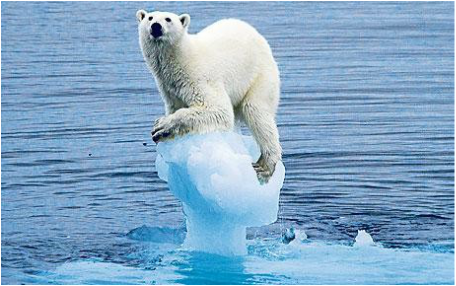Global Warming impact Biodiversity

Global warming has significant impacts on biodiversity, affecting ecosystems, species distribution, habitats, and ecological interactions. Here are some ways in which global warming influences biodiversity:
-
Habitat Loss and Fragmentation:
- Shifts in Habitat: As temperatures rise, the suitable habitats for many species may shift poleward or to higher elevations, leading to habitat loss for some species and fragmentation of ecosystems.
- Loss of Specialized Habitats: Species adapted to specific habitats, such as polar regions or alpine ecosystems, face the greatest risk as their habitats disappear or become unsuitable.
-
Changes in Species Distribution:
- Range Shifts: Many species are already moving to higher latitudes or elevations in response to warming temperatures, altering their geographic distributions.
- Invasive Species: Warmer temperatures can facilitate the spread of invasive species into new areas, disrupting native ecosystems and outcompeting native species.
-
Altered Phenology:
- Timing of Life Cycle Events: Warming temperatures can disrupt the timing of seasonal events such as flowering, migration, and breeding, leading to mismatches between species interactions (e.g., predator-prey relationships, pollination).
- Mismatch with Resources: Species may become out of sync with their food sources or breeding habitats, affecting their survival and reproduction.
-
Changes in Ecosystem Dynamics:
- Loss of Keystone Species: Global warming can threaten keystone species, which play crucial roles in maintaining ecosystem structure and function. Their loss can have cascading effects on biodiversity and ecosystem stability.
- Disruption of Trophic Relationships: Changes in species distributions and interactions, driven by warming temperatures, can disrupt food webs and alter trophic relationships within ecosystems.
-
Increased Extinction Risk:
- Vulnerable Species: Species with narrow ranges, specialized habitats, or limited dispersal abilities are particularly vulnerable to extinction due to habitat loss, fragmentation, and reduced availability of suitable habitats.
- Amphibians and Coral Reefs: Amphibians, coral reefs, and other temperature-sensitive species are at high risk of extinction due to their sensitivity to changes in temperature and water quality.
-
Loss of Ecosystem Services:
- Pollination and Seed Dispersal: Changes in species distributions and abundance can disrupt ecosystem services such as pollination and seed dispersal, which are essential for plant reproduction and ecosystem functioning.
- Carbon Sequestration: Biodiversity loss can reduce the capacity of ecosystems to sequester carbon, exacerbating global warming and creating a feedback loop.
-
Adaptation Challenges:
- Limited Adaptive Capacity: Many species may be unable to adapt quickly enough to keep pace with rapid changes in climate, leading to population declines and increased extinction risk.
- Fragmented Landscapes: Fragmentation of habitats and barriers to dispersal can hinder species' ability to move to more suitable habitats, exacerbating the impacts of global warming.
In summary, global warming poses significant threats to biodiversity through habitat loss, altered species distributions, disrupted ecological interactions, increased extinction risk, and loss of ecosystem services. Addressing these threats requires concerted efforts to mitigate climate change, protect and restore habitats, and enhance the resilience of ecosystems and species to changing environmental conditions.
Thank you,
